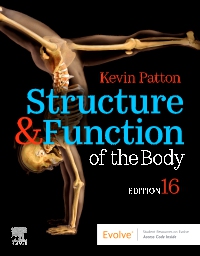

- The body and the archive how to#
- The body and the archive archive#
- The body and the archive full#
- The body and the archive code#
- The body and the archive tv#

In this rich meditation with his gifted daughter, author Aisha Sabatini Sloan, we find ourselves in a narrative of discovery and revelation. These photographs blur perception yet also work with an accuracy that reveals Sloan’s devotion to his craft.
The body and the archive how to#
In such nuance, we are asked how to see ourselves in the lens of the mind and the world. Sloan is a great storyteller whose visual voice is distinct amidst the artifacts of a life, beautifully lived. “ Captioning the Archives conveys Lester Sloan’s living mastery of one of the most complicated mediums of our time. I felt as though I was in the room with them, and genuinely honored to be there.” The love and mutual admiration between Lester Sloan and his daughter, noted writer Aisha Sabatini Sloan, makes the ‘captions’ a particular pleasure to read. Sloan dusting off his archives from a bygone era, we are reminded why photography is such a powerful medium not only do photographs provide a poignant history lesson by capturing fleeting moments in time, but they also create an archival document to revisit and reveal the often-astonishing circumstances embedded in their backstories. “ Captioning the Archives gifts us the unique opportunity to learn about Lester Sloan’s rich photographic career through the intimate experience of a storytelling father and his curious daughter.
The body and the archive full#
“Insightful, inquisitive, and full of vivid photographs, this powerful work is as beautiful as it is galvanizing.” Lester’s images encompass celebrity portraits, key news events like Pope John Paul’s visit to Mexico, Black cultural life in Europe, and, with astonishing emotion, the everyday lives of Black folk in Los Angeles and Detroit.
The body and the archive archive#
In this father-daughter collaboration, Lester opened his archive of street photography, portraits, and news photos, and Aisha interviewed him, creating rich, probing, dialogue-based captions for more than one hundred photographs. His daughter, noted essayist and National Magazine Award-winning writer Aisha Sabatini Sloan, covers race and current events, often coupled with analysis of art, film, and pop culture.

Lester Sloan began his photography career as a cameraman for the CBS affiliate in Detroit, then worked as a staff photographer in Los Angeles for Newsweek magazine for twenty-five years.
The body and the archive code#
PGAs I mentioned, Le Code Noir functions as a memorial object that carries the traumas of the slavery era but also functions as a pedagogical tool to understand the mechanisms of enslavement and the fabrication of ideologies of race of social categorisations.To order Captioning the Archives alongside the first two titles from the Of the Diaspora series, click here.įor an exclusive excerpt from Captioning the Archives, click here Could you expand a bit on the importance of what you have described as 'the urgency of starting a decolonial ecology'? In my view, there is still a disconnect between the extractivism of materials, environmental degradation, and its relationship to the spaces we inhabit or rather, spaces being the raw material of sovereignty and the violence it continues to carry with it. I feel this resonates with Achille Mbembe's book Necropolitics (2011), where colonial occupation is addressed as a matter of seizing, delimiting, and asserting control over a physical geographical area-of writing on the ground a new set of social and spatial relations.
The body and the archive tv#
Ocula Feature steirischer herbst ’20: Becoming Paranoia TV Read More JDFor the 6th Lubumbashi Biennale, you presented the expansive installation Echo museum – the archive and Udji Kinge-described as 'a video about performances in ore quarries, intended to reveal psychological spaces affected by social and political issues'. Every drawing is a celebration that escapes trauma-a small victory over the psychological horror of our times. The toxic material-linked by the colonial archive-is being treated through rhymes that are sung through poetry, painted, drawn, and ritualised through performative gestures. PGMy answer could be summed up in the question, 'Do you hear the lamentations of the trees?' When my body becomes a ball of fat crossed by human geographies in a time shaped by a specialised syncretism-I mean, a mixture of past, present, and future-the artwork becomes a wave. How have archival materials assisted you in establishing your role as a griot, artist, and teller of stories? In paintings and drawings from your project El Mundo Sans le Corps, exhibited at 1-54 Contemporary African Art Fair in 2021, the physical body is reflected as a carrier of memories. View Details and Enquire JDYou have often used paintings and drawings to deconstruct stereotypes as they are projected onto ideas of articulating and understanding the nuances of Blackness and Africanness within the global.


 0 kommentar(er)
0 kommentar(er)
